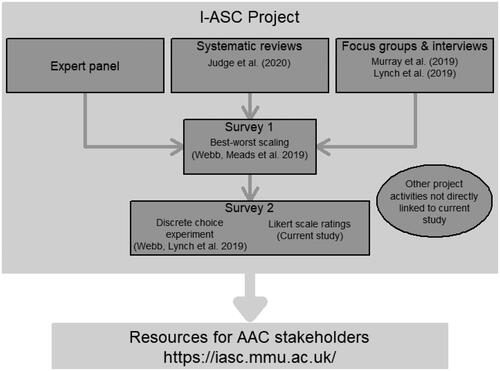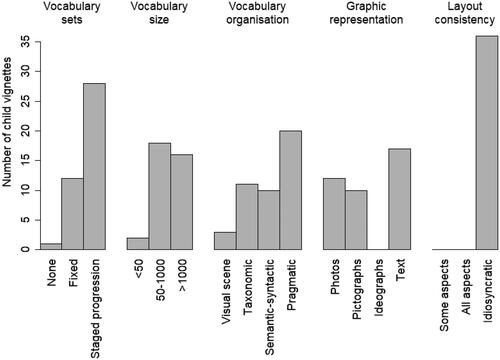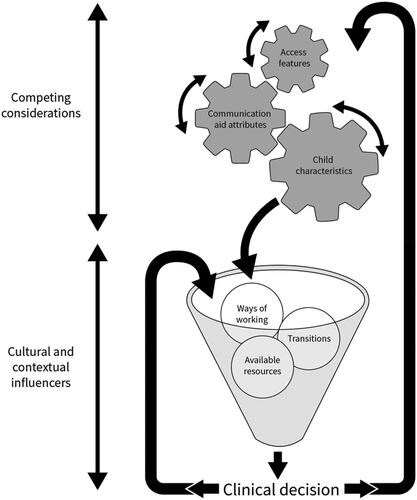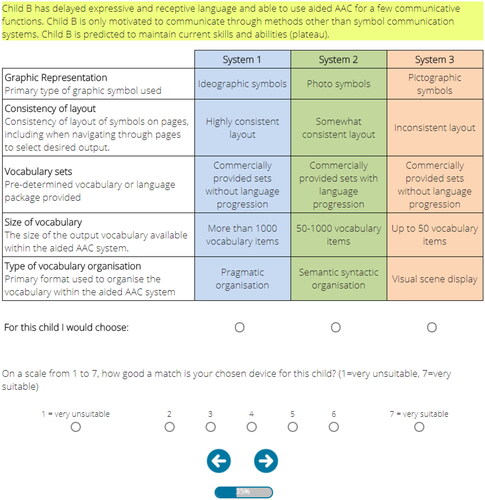Figures & data
Figure 1. Schematic representation of the relationship between the current study and the wider I-ASC project.

Table 1. Attributes and levels for discrete choice experiment and likert scale survey.
Table 2. Participant demographics (N = 172).
Table 3. For each child vignette, the proportions of systems rated at least 5 and at least 6.
Figure 4. Number of times each AAC system level was part of a child vignette’s most preferred system.

Figure 5. The I-ASC explanatory model of decision making. From Murray et al. (Citation2019).



